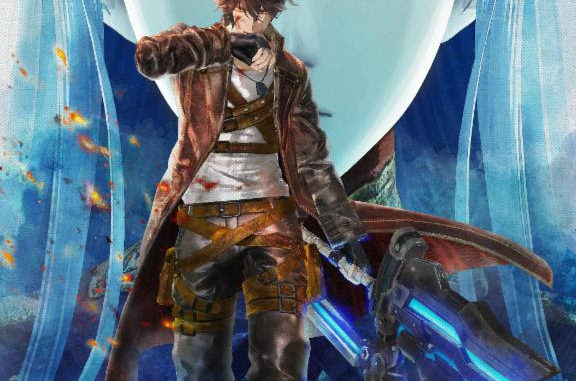
“Valkyria Revolution†says it all in its name. It’s an attempt to transform a beloved series, altering certain elements for two main reasons: to accelerate the combat system and appeal to both handheld and console gamers. Unfortunately, the game achieves these goals with too big a loss.
Also supporting its name is the fact that it’s not a sequel. “Valkyria Revolution†takes place in a universe separate from the series’ predecessors. It’s a “Valkyria†game at heart, but in place here is a spinoff that’s, well, spun a little too far off. Aspects of what made the “Chronicles†series unique, like its memorable hand drawn art style or the tactical-based combat, have been replaced — downgraded seems to be a more appropriate word — with a more modern yet less effective approach.
The tactics formula is still there, but it acts only as the bedrock for a simpler, more active system. During battle, you’ve the option of charging in and striking enemies with a standard attack, or you can pause and select spells and secondary weapons through the battle palette. While this sounds cool in theory, skirmishes tend not to play out in any sort of strategic fashion. The combat quickly starts to feel like a hack-and-slash more than anything, rendering all those battle calculations an unnecessary and time-consuming choice.
While mostly ineffectual, the tactics, reminiscent of series past, will likely be your go-to if you’re looking to spice up a battle. Sure, you don’t need to, but you’ll still want to. “Valkyria Revolution’s†shining and most rewarding moments derive from landing kickass blows, like a spiraling slash through a group of surrounding enemies, turning the tide of battle through one solid attack taking out half an infantry.
The typical enemy soldiers react predictably. They stand around waiting for you to close in, responding stupidly and giving you a nice window to attack. Again, if you so choose, you can put a little more thought into your approach and try to get the drop on ‘em. Environments at times allow for stealth, which increases an enemy’s risk for panic, resulting in hindered abilities. But there are other enemy-types to look out for, like shield-wielding commanders, tanks and, of course, bosses.
You can customize your squad as a whole or individually, assigning behavioral traits as well as which spells or items you’d prefer an AI uses in battle. Additional items can be bought, upgraded or created to add that flavorful variety JRPG lovers crave. You can also choose what characters you’d like to deploy with before a mission and switch freely between them on the field. There are “free missions†available to help level up your characters and earn items before moving on with the campaign.
All this is supported by a super in-depth story that would benefit from a strict editor, specifically one who isn’t afraid to cut (as if there’s an editor is afraid of that.) “Valkyria Revolution’s†story is influenced by the European industrial revolution. Told through a history professor speaking with her student a century later, the story explores the events of the war between Jutland, a nation suffering from an economic blockade, and the Ruzi Empire, whose tyrannical rule over the Europa continent is the cause of Jutland’s despair.
Jutland then sets out to liberate the surrounding nations and put an end to Ruzi’s conquest, which ultimately means facing the empire’s Valkyria — basically a grim reaper. It’s said that Captain Amleth Gronkaer, who’s leading Jutland’s Vanargand forces into battle, is one of five traitors who started the war. But the war was a good thing, and so now we see the student’s interest in hearing his professor’s tale: to get an unbiased look at the inner workings of the so-called traitors.
But where the story would have benefited from that aforementioned editor is that it’s told through overly long cutscenes, some lasting more than 15 minutes and offering only small amounts of memorable information. Playing this on the Vita was rough. No one wants to sit on the subway holding a Vita waiting the entire trip to actually play it.
The Good: The story in concept is an interesting tale, supported by a slew of missions that’ll keep players busy for hours on end.
The Bad: However, its execution needs some tightening, and there’s isn’t enough incentive to explore new combat strategies.
Final Thoughts: “Valkyria Revolution†is slow-moving and repetitive, but there’s a lot of content. It holds itself up because it doesn’t forget its “Valkyria†roots, and that’s what players will enjoy most. Maybe revolution was never the answer.

Leave a Reply